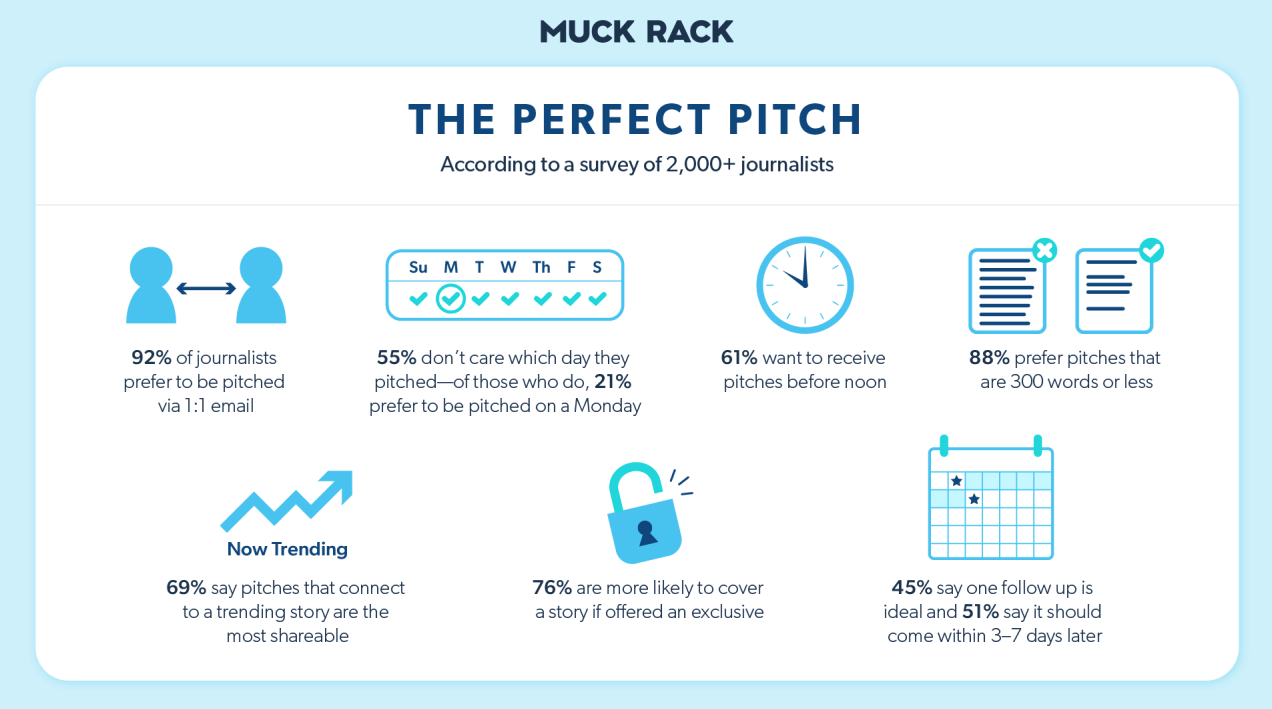Pitch perfect: Successful story placement in 2023
Are you looking to pitch a story to a journalist or a news outlet? Knowing the challenges, habits and preferences of journalists can help increase the chances of your pitch being successful. In this blog post, we will shed light on some interesting insights on the state of journalism in 2023 based on a recent survey of over 2,000 journalists.
The world of journalism is constantly evolving, and 2023 is set to bring new trends, challenges, and events to the forefront. In a recent survey conducted by Muck Rack, more than 2,000 journalists were asked about the current state of journalism and the outlook of the industry. The results are not only interesting but also very helpful to understand their everyday challenges and preferences – especially when it comes to pitching.
Journalism in flux: Challenges and trends
Despite the above-mentioned challenges, over half of journalists remain optimistic about their profession. However, the issue of trust in journalism remains a concern, with nearly a third of journalists citing it as a top priority. While most respondents primarily report online, just under half also work in print. This is reflective of the changing media landscape and the need for journalists to be versatile and adaptable.
When it comes to target audiences, millennials and Gen X are the most commonly reported groups that journalists are writing for. These generations are the most active on social media and are more likely to consume news online. This aligns with the fact that social media continues to play a crucial role in journalism: Twitter remains the most valued platform, followed by Facebook and LinkedIn.
When it comes to credible sources, academic experts are the most trusted, which comes as no surprise as we have highlighted the rise of experts in our Tech 500 research findings, followed by CEOs. Meanwhile, PR professionals have held steady with about 50% of journalists finding them a good source. Let’s explore some of the steps to take and things to consider to improve PR professionals’ reputation with the other 50% of journalists.
Pitch perfect: How to meet journalists’ preferences
Most journalists write 2-4 stories per week, which means they’re constantly on the lookout for fresh and exciting content. Pitching a timely and relevant story can significantly increase your chances of getting your work picked up. In fact, 25% of journalists say that half or more of their stories come from pitches. That’s right – a well-crafted pitch could be the key to unlocking the doors of major publications and media outlets.
And the best part: Journalists are even more receptive to pitches this year compared to the previous year. According to the survey, around 7% of journalists said they are more likely to respond to a pitch now than last year. So, it’s the perfect time to start brainstorming and pitching those ideas! However, before you start firing off pitches left and right, there are a few things to keep in mind in order to create the “perfect pitch”:

First of all, most journalists (92%) prefer to be contacted by email. But did you know that one of the most common complaints from journalists is the growing flood of irrelevant pitches clogging their email inboxes? Personalised pitches are crucial. Therefore, make sure to do your research: It’s not only important that your pitch features an exciting topic, but also that it is relevant to the journalist’s subject area.
What else should you do to make sure your pitch hits the mark? Well, it turns out that more than half of journalists (55%) don’t care what day they receive a pitch. However, 21% prefer Mondays. And if you want to maximise your chances of success, you should send your pitch before noon, because 61 % of journalists prefer the first half of the day to check their mails for potential stories.
Of course, it’s not just about when you send your pitch. It’s also about the content. Keep it short and sweet: 88% of journalists prefer pitches that are 300 words or less. More than two-thirds (69%) also say that pitches with topical relevance are most likely to be picked up. And if you need an ace up your sleeve, an exclusive offer could be the key to success: 76 % of journalists are more willing to cover a story if it is offered as an exclusive. Last but not least: If you need to follow up, one email – preferably 3-7 days later – is ideal for 45 % of journalists.





 Josh Boak, Unsplash
Josh Boak, Unsplash 




